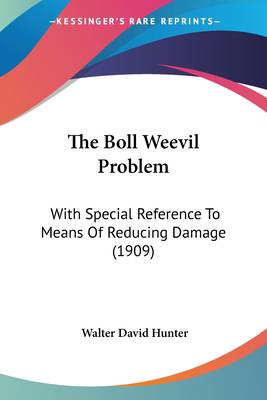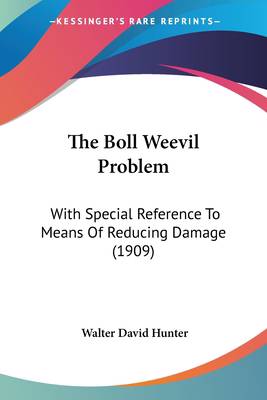
- Afhalen na 1 uur in een winkel met voorraad
- Gratis thuislevering in België vanaf € 30
- Ruim aanbod met 7 miljoen producten
- Afhalen na 1 uur in een winkel met voorraad
- Gratis thuislevering in België vanaf € 30
- Ruim aanbod met 7 miljoen producten
Zoeken
The Boll Weevil Problem
With Special Reference To Means Of Reducing Damage (1909)
Walter David Hunter
Paperback | Engels
€ 25,95
+ 51 punten
Uitvoering
Omschrijving
The Boll Weevil Problem: With Special Reference To Means Of Reducing Damage is a book written by Walter David Hunter in 1909. The book focuses on the boll weevil problem, which was a major agricultural issue in the southern United States during the early 1900s. The boll weevil is a beetle that feeds on cotton buds and flowers, causing significant damage to cotton crops. Hunter's book provides a detailed analysis of the boll weevil problem, including its history, life cycle, and impact on cotton production. He also explores various methods for reducing the damage caused by the boll weevil, including cultural practices, chemicals, and biological control. The book is written in a scientific and technical style, with detailed descriptions of experiments and data analysis. It is intended for agricultural researchers, farmers, and policymakers who are interested in finding solutions to the boll weevil problem. Overall, The Boll Weevil Problem: With Special Reference To Means Of Reducing Damage is an important historical document that sheds light on the challenges faced by farmers in the early 1900s and the scientific efforts to address those challenges.This scarce antiquarian book is a facsimile reprint of the old original and may contain some imperfections such as library marks and notations. Because we believe this work is culturally important, we have made it available as part of our commitment for protecting, preserving, and promoting the world's literature in affordable, high quality, modern editions, that are true to their original work.
Specificaties
Betrokkenen
- Auteur(s):
- Uitgeverij:
Inhoud
- Aantal bladzijden:
- 52
- Taal:
- Engels
Eigenschappen
- Productcode (EAN):
- 9781120872289
- Verschijningsdatum:
- 29/01/2010
- Uitvoering:
- Paperback
- Formaat:
- Trade paperback (VS)
- Afmetingen:
- 152 mm x 229 mm
- Gewicht:
- 81 g

Alleen bij Standaard Boekhandel
+ 51 punten op je klantenkaart van Standaard Boekhandel
Beoordelingen
We publiceren alleen reviews die voldoen aan de voorwaarden voor reviews. Bekijk onze voorwaarden voor reviews.











